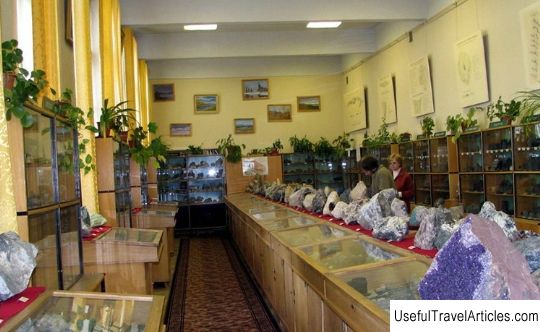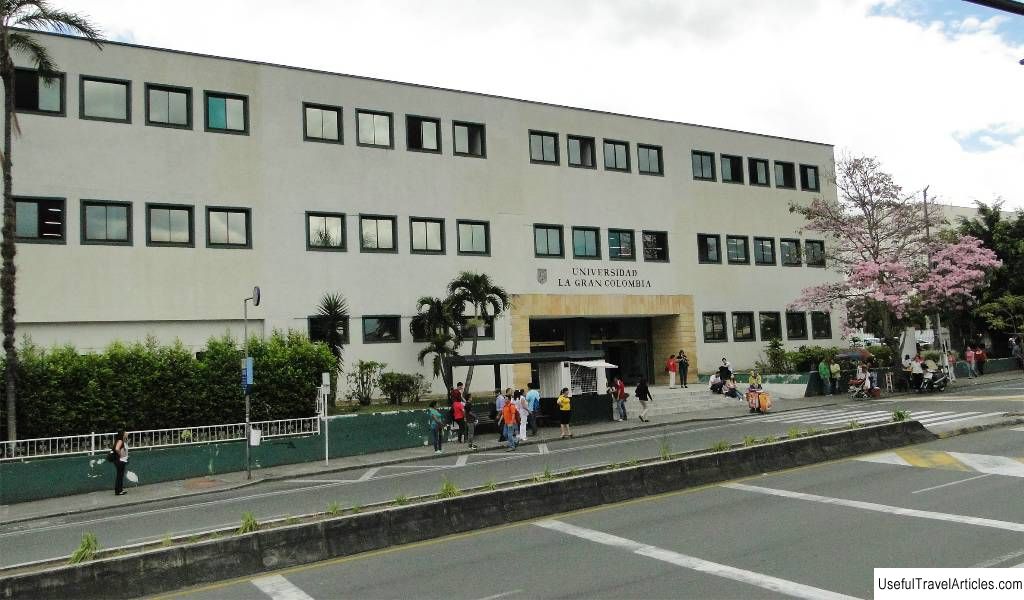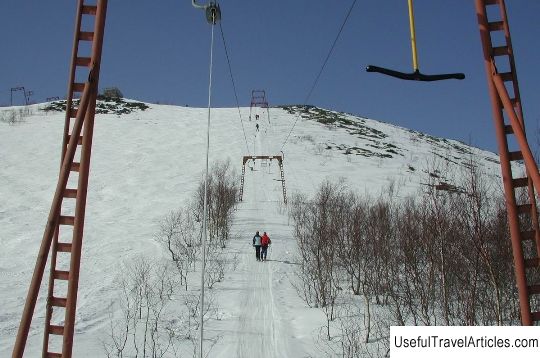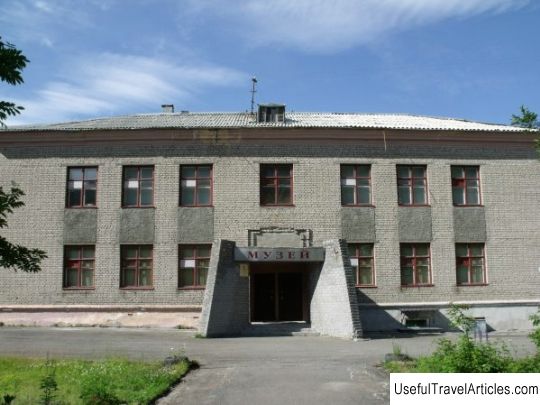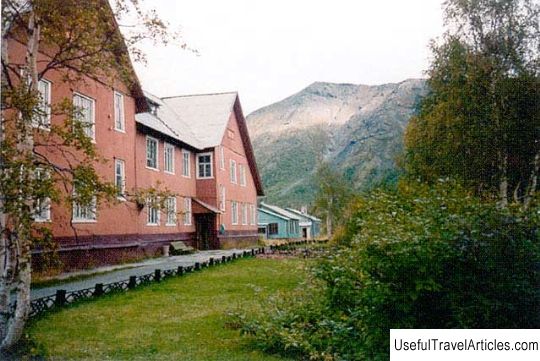Khibiny description and photo - Russia - North-West: Murmansk region
Rating: 8,9/10 (679 votes) 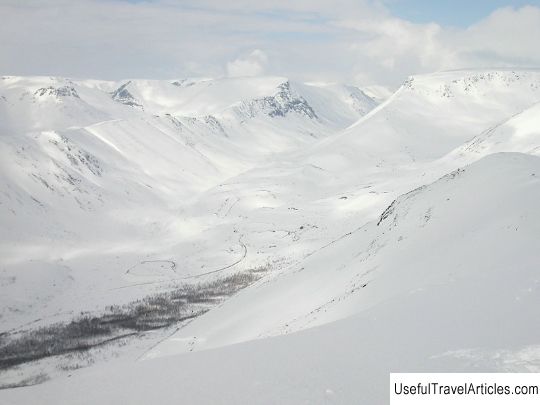
Khibiny description and photos - Russia - North-West: Murmansk region. Detailed information about the attraction. Description, photos and a map showing the nearest significant objects. Photo and descriptionAs you know, the Khibiny Mountains are the largest mountain range located on the Kola Peninsula. The name “Khibiny” appeared not so long ago, because before that the mountain system was called by the Sami word “Umptek”. It is believed that the geological age of this rock reaches about 350 million years. The exact origin of the Khibiny is still unknown, although according to the Russian dialect of the Arkhangelsk region and the Kola Peninsula, the term “Khiben” predominates, which means “plateau.” The mountains are composed of igneous rocks or nepheline syenites. The Khibiny massif has plateau-like peaks, rather steep slopes, in some places of which there are glaciers and snowfields. The highest point of the mountain system is Mount Yudichvumchorr, whose height reaches 1200, 5 m above sea level and which drops off quite abruptly in the form of inaccessible sheer cliffs. The mountain Khibiny massif in its shape looks more like a horseshoe, somewhat open towards the east. High flat plateaus and a complex system of especially deep valleys became a characteristic relief. Most of the valleys end up in the form of global glacial cirques, which contain snow throughout the year. The inherent plateaus are flat surfaces completely covered with bare stone placers. A huge number of minerals are found in the Khibiny, the vast majority of which were discovered at this place for the first time - that is why the Khibiny massif is also called the mineralogical natural museum. The minerals found here are the most important. This place is home to the world's largest deposits of apatite containing phosphorus, as well as titanium, sphenic, molybdenum ores and many other rare elements, which have become a reliable base for the mining industry of the North. As for the flora of the Khibiny mountains , then it changes more and more with increasing height. The slopes and foothills of the mountains, reaching an altitude of 350-400 m, are occupied exclusively by coniferous forests, represented by spruce and pine forests, which can most often be seen with an admixture of birch species. A little higher there is a birch crooked forest, which rises even more in height by 100 m. In an even more elevated zone, there are crooked forest zones - this is tundra, almost completely covered with small shrubs - blueberries, lingonberries, crows, bearberries, as well as various types of lichens. After, As soon as the first frosts pass, the leaves of all plants quickly acquire a rich, bright color, while creating an incredibly beautiful multi-colored carpet. With increasing altitude on the slopes, more and more vegetation becomes thinner, and often bare areas of rocky embankments can be found. All mountain peaks are almost completely without vegetation, and on the rocks and in some places there are yellow, gray and green patterns of lichens prevailing in these places in placers. The flora of the Khibiny mountains is especially valuable, because a considerable number of representatives of local vegetation are listed in the Red Book. As for the local fauna, the terrestrial vertebrates of the mountain range are represented by 27 species of mammals, 2 species of reptiles, one species of amphibians and 123 different species of birds. To date, the following mines operate on the territory of the Khibiny mountain range: Rasmvumchorr (Rasvumchorr plateau and Apatite circus deposits), Kirovsky (Yukspor and Kukisvumchorr), Central (Rasvumchorr), as well as Vostochny (Nyurkpakhk and Koashva). Extraction of minerals is carried out both by open and underground methods. The number of open mountain ranges is decreasing more and more, and after a while the development of deposits will be carried out exclusively by the underground method. For quite a long period of time, the Khibiny Mountains are one of the most favorite vacation spots for tourists, because it is the first in the entire Arctic an alpine area in which a proper system of routes was carried out, ranging from the training to the most difficult. Even small mountains can be deceiving        We also recommend reading Geranos beach description and photos - Greece: Patmos Island Topic: Khibiny description and photo - Russia - North-West: Murmansk region. |
